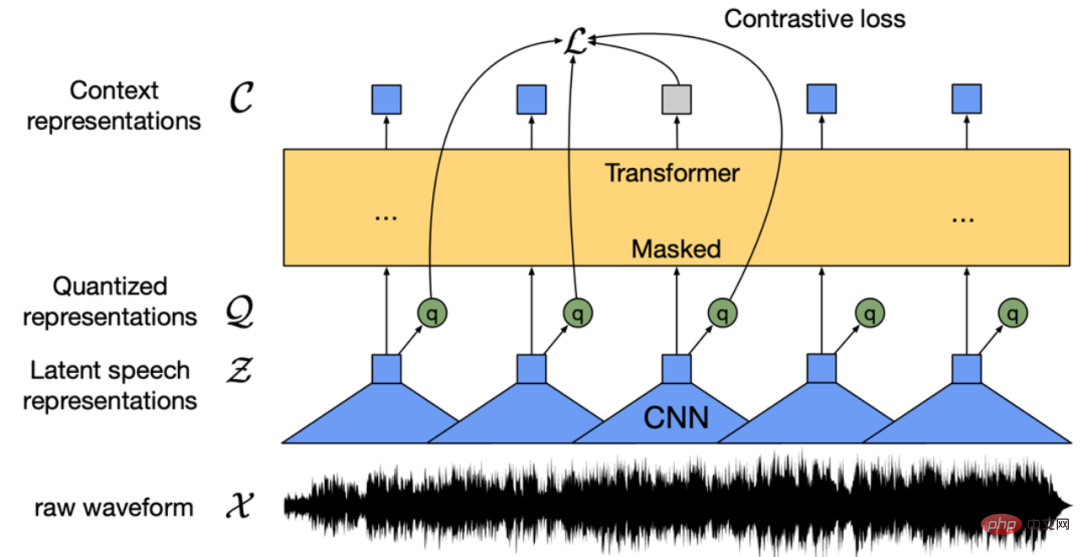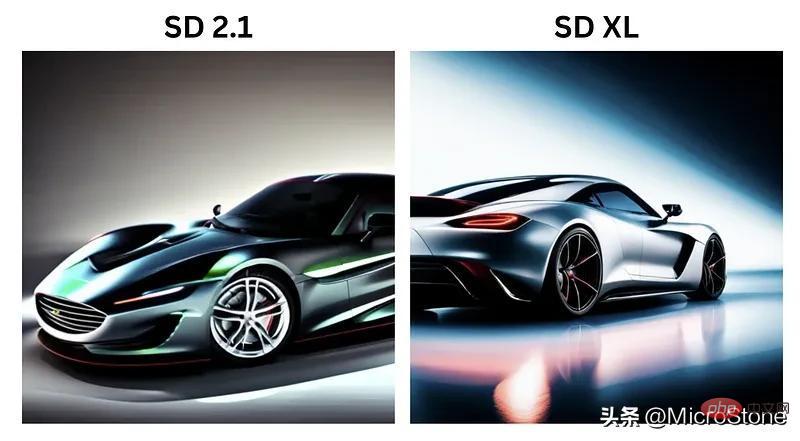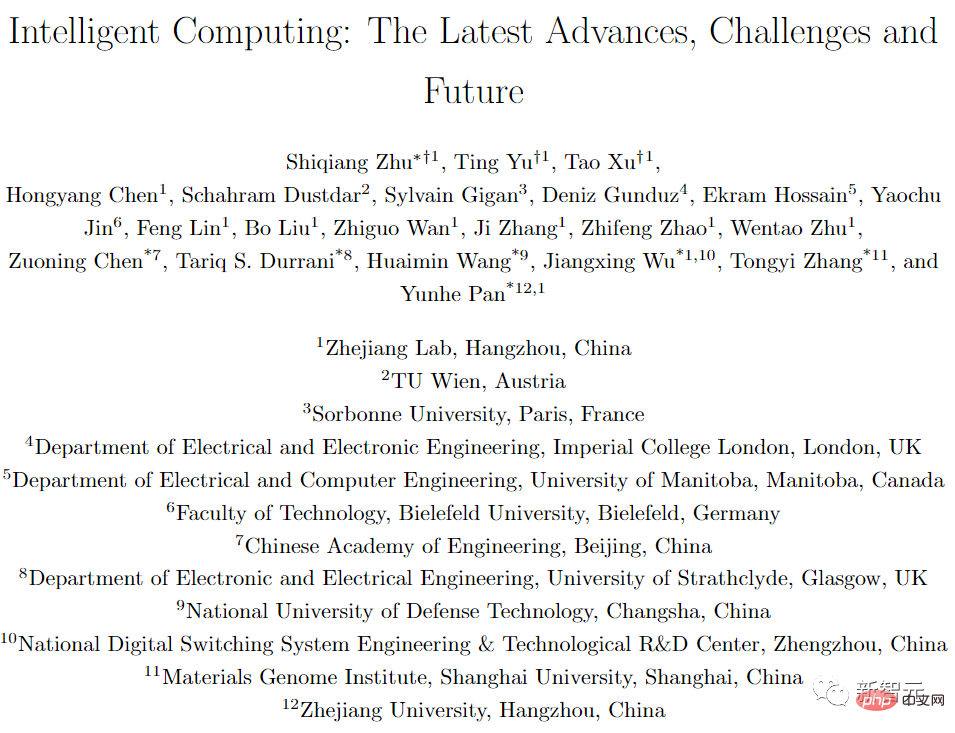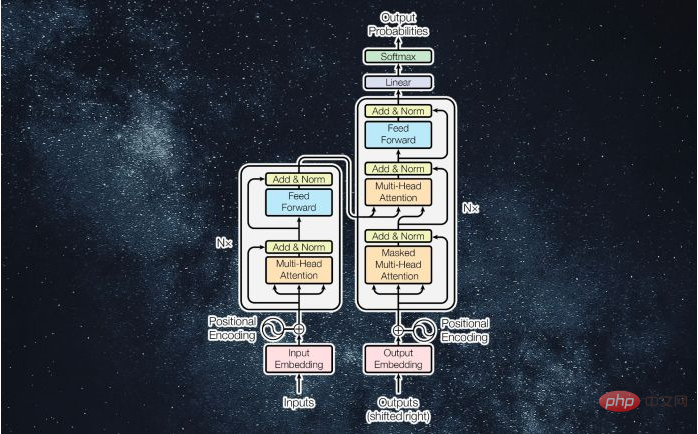 Technology peripherals
Technology peripherals AI
AI LeCun once again badmouthed autoregressive LLM: GPT-4's reasoning ability is very limited, as evidenced by two papers
LeCun once again badmouthed autoregressive LLM: GPT-4's reasoning ability is very limited, as evidenced by two papers"Anyone who thinks that auto-regressive LLM is already approaching human-level AI, or that it simply needs to scale up to reach human-level AI, must read this. AR-LLM has very limited reasoning and planning capabilities , to solve this problem, it cannot be solved by making them larger and training with more data."

For a long time, Figure Yann LeCun, the winner of the Spirit Award, is a "questioner" of LLM, and the autoregressive model is the learning paradigm that the GPT series of LLM models rely on. He has publicly expressed his criticism of autoregression and LLM more than once, and has produced many golden sentences, such as:
"In five years from now, no one in their right mind will Will use autoregressive models."
"Auto-Regressive Generative Models suck!"
"LLM has a very superficial understanding of the world."
What made LeCun cry out again recently are two newly released papers:

"Can LLM really self-criticize (and iteratively improve) its solutions as the literature suggests? Two new papers from our group reason (https://arxiv. org/abs/2310.12397) and planning (https://arxiv.org/abs/2310.08118) missions to investigate (and challenge) these claims."
See Well, the theme of these two papers investigating the verification and self-criticism capabilities of GPT-4 has resonated with many people.
The authors of the paper stated that they also believe that LLM is a great "idea generator" (whether in language form or code form), but they cannot guarantee their own planning/reasoning capabilities. Therefore, they are best used in an LLM-Modulo environment (with either a reliable reasoner or a human expert in the loop). Self-criticism requires verification, and verification is a form of reasoning (so be surprised by all the claims about LLM's ability to self-criticize).
At the same time, there are also voices of doubt: "The reasoning ability of convolutional networks is more limited, but this does not prevent AlphaZero's work from appearing. It is all about the reasoning process and establishment (RL) feedback loop. I think model capabilities allow for extremely deep reasoning (e.g., research-level mathematics)."

In this regard, LeCun's The idea is: "AlphaZero "really" executes the plan. This is done via a Monte Carlo tree search, using a convolutional network to come up with good actions and another convolutional network to evaluate the position. The time spent exploring the tree could be infinite, that's all reasoning and planning. "
In the future, the topic of whether autoregressive LLM has reasoning and planning capabilities may not be finalized.
Next, we can take a look at what these two new papers talk about.
Paper 1: GPT-4 Doesn't Know It's Wrong: An Analysis of Iterative Prompting for Reasoning Problems
The first paper raised questions among researchers about the self-criticism ability of state-of-the-art LLM, including GPT-4.

Paper address: https://arxiv.org/pdf/2310.12397.pdf
Connect Let's take a look at the introduction of the paper.
People have always had considerable disagreements about the reasoning capabilities of large language models (LLMs). Initially, researchers were optimistic that the reasoning capabilities of LLMs would automatically appear as the model scale expands. , however, as more failures emerged, expectations became less intense. Afterwards, researchers generally believed that LLM has the ability to self-criticize and improve LLM solutions in an iterative manner, and this view has been widely disseminated.
But is this really the case?
Researchers from Arizona State University examined the reasoning capabilities of LLM in a new study. Specifically, they focused on the effectiveness of iterative prompting in the graph coloring problem, one of the most famous NP-complete problems.
The study shows that (i) LLM is not good at solving graph coloring instances (ii) LLM is not good at validating solutions and is therefore ineffective in iterative mode. The results of this paper thus raise questions about the self-critical capabilities of state-of-the-art LLMs.
The paper gives some experimental results, for example, in direct mode, LLM is very bad at solving graph coloring instances. In addition, the study also found that LLM is not good at verifying the solution. Worse yet, the system fails to recognize the correct color and ends up with the wrong color.
The following figure is an evaluation of the graph colorization problem. In this setting, GPT-4 can guess colors in an independent and self-critical mode. Outside of the self-critical loop there is an external voice validator.

The results show that GPT4 is less than 20% accurate at guessing colors, and even more surprisingly, the self-criticism mode (image below) Column 2) has the lowest accuracy. This paper also examines the related question of whether GPT-4 would improve its solution if an external vocal verifier provided provably correct criticisms of the colors it guesses. In this case, reverse hinting can really improve performance.

Even if GPT-4 accidentally guesses a valid color, its self-criticism may cause it to hallucinate that there is no violation .

Finally, the author gives a summary, regarding the problem of graph coloring:
- Self-criticism It actually hurts LLM performance because GPT-4 is terrible at verification;
- Feedback from external validators can really improve LLM performance.
Paper 2: Can Large Language Models Really Improve by Self-critiquing Their Own Plans?
In the paper "Can Large Language Models Really Improve by Self-critiquing Their Own Plans?", the research team explored the ability of LLM to self-verify/criticize in the context of planning.
This paper provides a systematic study of the ability of LLMs to critique their own outputs, particularly in the context of classical planning problems. While recent research has been optimistic about the self-critical potential of LLMs, especially in iterative settings, this study suggests a different perspective.

Paper address: https://arxiv.org/abs/2310.08118
Unexpected However, the results show that self-criticism degrades the performance of plan generation, especially compared to systems with external verifiers and LLM verifiers. LLM can produce a large number of error messages, thereby compromising the reliability of the system.
The researchers’ empirical evaluation on the classic AI planning domain Blocksworld highlights that the self-critical function of LLM is not effective in planning problems. The validator can generate a large number of errors, which is detrimental to the reliability of the entire system, especially in areas where the correctness of planning is critical.
Interestingly, the nature of the feedback (binary or detailed feedback) has no significant impact on plan generation performance, suggesting that the core issue lies in the binary verification capabilities of LLM rather than the granularity of the feedback.
As shown in the figure below, the evaluation architecture of this study includes 2 LLMs - generator LLM and verifier LLM. For a given instance, the generator LLM is responsible for generating candidate plans, while the verifier LLM determines their correctness. If the plan is found to be incorrect, the validator provides feedback giving the reason for its error. This feedback is then transferred to the generator LLM, which prompts the generator LLM to generate new candidate plans. All experiments in this study used GPT-4 as the default LLM.

This study experiments and compares several plan generation methods on Blocksworld. Specifically, the study generated 100 random instances for evaluation of various methods. To provide a realistic assessment of the correctness of the final LLM planning, the study employs an external validator VAL.
As shown in Table 1, the LLM LLM backprompt method is slightly better than the non-backprompt method in terms of accuracy.

Out of 100 instances, the validator accurately identified 61 (61%).

The table below shows the performance of LLM when receiving different levels of feedback, including no feedback.

The above is the detailed content of LeCun once again badmouthed autoregressive LLM: GPT-4's reasoning ability is very limited, as evidenced by two papers. For more information, please follow other related articles on the PHP Chinese website!
 从VAE到扩散模型:一文解读以文生图新范式Apr 08, 2023 pm 08:41 PM
从VAE到扩散模型:一文解读以文生图新范式Apr 08, 2023 pm 08:41 PM1 前言在发布DALL·E的15个月后,OpenAI在今年春天带了续作DALL·E 2,以其更加惊艳的效果和丰富的可玩性迅速占领了各大AI社区的头条。近年来,随着生成对抗网络(GAN)、变分自编码器(VAE)、扩散模型(Diffusion models)的出现,深度学习已向世人展现其强大的图像生成能力;加上GPT-3、BERT等NLP模型的成功,人类正逐步打破文本和图像的信息界限。在DALL·E 2中,只需输入简单的文本(prompt),它就可以生成多张1024*1024的高清图像。这些图像甚至
 找不到中文语音预训练模型?中文版 Wav2vec 2.0和HuBERT来了Apr 08, 2023 pm 06:21 PM
找不到中文语音预训练模型?中文版 Wav2vec 2.0和HuBERT来了Apr 08, 2023 pm 06:21 PMWav2vec 2.0 [1],HuBERT [2] 和 WavLM [3] 等语音预训练模型,通过在多达上万小时的无标注语音数据(如 Libri-light )上的自监督学习,显著提升了自动语音识别(Automatic Speech Recognition, ASR),语音合成(Text-to-speech, TTS)和语音转换(Voice Conversation,VC)等语音下游任务的性能。然而这些模型都没有公开的中文版本,不便于应用在中文语音研究场景。 WenetSpeech [4] 是
 普林斯顿陈丹琦:如何让「大模型」变小Apr 08, 2023 pm 04:01 PM
普林斯顿陈丹琦:如何让「大模型」变小Apr 08, 2023 pm 04:01 PM“Making large models smaller”这是很多语言模型研究人员的学术追求,针对大模型昂贵的环境和训练成本,陈丹琦在智源大会青源学术年会上做了题为“Making large models smaller”的特邀报告。报告中重点提及了基于记忆增强的TRIME算法和基于粗细粒度联合剪枝和逐层蒸馏的CofiPruning算法。前者能够在不改变模型结构的基础上兼顾语言模型困惑度和检索速度方面的优势;而后者可以在保证下游任务准确度的同时实现更快的处理速度,具有更小的模型结构。陈丹琦 普
 解锁CNN和Transformer正确结合方法,字节跳动提出有效的下一代视觉TransformerApr 09, 2023 pm 02:01 PM
解锁CNN和Transformer正确结合方法,字节跳动提出有效的下一代视觉TransformerApr 09, 2023 pm 02:01 PM由于复杂的注意力机制和模型设计,大多数现有的视觉 Transformer(ViT)在现实的工业部署场景中不能像卷积神经网络(CNN)那样高效地执行。这就带来了一个问题:视觉神经网络能否像 CNN 一样快速推断并像 ViT 一样强大?近期一些工作试图设计 CNN-Transformer 混合架构来解决这个问题,但这些工作的整体性能远不能令人满意。基于此,来自字节跳动的研究者提出了一种能在现实工业场景中有效部署的下一代视觉 Transformer——Next-ViT。从延迟 / 准确性权衡的角度看,
 Stable Diffusion XL 现已推出—有什么新功能,你知道吗?Apr 07, 2023 pm 11:21 PM
Stable Diffusion XL 现已推出—有什么新功能,你知道吗?Apr 07, 2023 pm 11:21 PM3月27号,Stability AI的创始人兼首席执行官Emad Mostaque在一条推文中宣布,Stable Diffusion XL 现已可用于公开测试。以下是一些事项:“XL”不是这个新的AI模型的官方名称。一旦发布稳定性AI公司的官方公告,名称将会更改。与先前版本相比,图像质量有所提高与先前版本相比,图像生成速度大大加快。示例图像让我们看看新旧AI模型在结果上的差异。Prompt: Luxury sports car with aerodynamic curves, shot in a
 五年后AI所需算力超100万倍!十二家机构联合发表88页长文:「智能计算」是解药Apr 09, 2023 pm 07:01 PM
五年后AI所需算力超100万倍!十二家机构联合发表88页长文:「智能计算」是解药Apr 09, 2023 pm 07:01 PM人工智能就是一个「拼财力」的行业,如果没有高性能计算设备,别说开发基础模型,就连微调模型都做不到。但如果只靠拼硬件,单靠当前计算性能的发展速度,迟早有一天无法满足日益膨胀的需求,所以还需要配套的软件来协调统筹计算能力,这时候就需要用到「智能计算」技术。最近,来自之江实验室、中国工程院、国防科技大学、浙江大学等多达十二个国内外研究机构共同发表了一篇论文,首次对智能计算领域进行了全面的调研,涵盖了理论基础、智能与计算的技术融合、重要应用、挑战和未来前景。论文链接:https://spj.scien
 什么是Transformer机器学习模型?Apr 08, 2023 pm 06:31 PM
什么是Transformer机器学习模型?Apr 08, 2023 pm 06:31 PM译者 | 李睿审校 | 孙淑娟近年来, Transformer 机器学习模型已经成为深度学习和深度神经网络技术进步的主要亮点之一。它主要用于自然语言处理中的高级应用。谷歌正在使用它来增强其搜索引擎结果。OpenAI 使用 Transformer 创建了著名的 GPT-2和 GPT-3模型。自从2017年首次亮相以来,Transformer 架构不断发展并扩展到多种不同的变体,从语言任务扩展到其他领域。它们已被用于时间序列预测。它们是 DeepMind 的蛋白质结构预测模型 AlphaFold
 AI模型告诉你,为啥巴西最可能在今年夺冠!曾精准预测前两届冠军Apr 09, 2023 pm 01:51 PM
AI模型告诉你,为啥巴西最可能在今年夺冠!曾精准预测前两届冠军Apr 09, 2023 pm 01:51 PM说起2010年南非世界杯的最大网红,一定非「章鱼保罗」莫属!这只位于德国海洋生物中心的神奇章鱼,不仅成功预测了德国队全部七场比赛的结果,还顺利地选出了最终的总冠军西班牙队。不幸的是,保罗已经永远地离开了我们,但它的「遗产」却在人们预测足球比赛结果的尝试中持续存在。在艾伦图灵研究所(The Alan Turing Institute),随着2022年卡塔尔世界杯的持续进行,三位研究员Nick Barlow、Jack Roberts和Ryan Chan决定用一种AI算法预测今年的冠军归属。预测模型图


Hot AI Tools

Undresser.AI Undress
AI-powered app for creating realistic nude photos

AI Clothes Remover
Online AI tool for removing clothes from photos.

Undress AI Tool
Undress images for free

Clothoff.io
AI clothes remover

AI Hentai Generator
Generate AI Hentai for free.

Hot Article

Hot Tools

MantisBT
Mantis is an easy-to-deploy web-based defect tracking tool designed to aid in product defect tracking. It requires PHP, MySQL and a web server. Check out our demo and hosting services.

Atom editor mac version download
The most popular open source editor

Dreamweaver Mac version
Visual web development tools

Notepad++7.3.1
Easy-to-use and free code editor

SublimeText3 English version
Recommended: Win version, supports code prompts!





